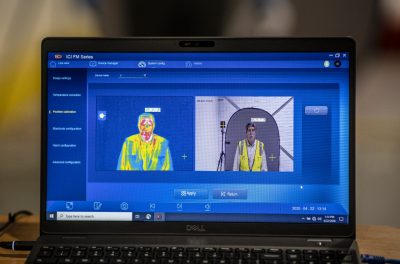I recently wrote about the decision that most community colleges seem to be making for the fall semester. That is, they’re planning to offer an online fall semester. Community colleges offer a wide range of academic programs, and online instruction may work for students in transfer programs. It doesn’t work for students in occupational education programs.
Returning students to the classroom requires thought, effort and commitment on the part of the community college. Even simple things like reducing the number of students in a classroom at any given time turn out to be not-so-simple.
Occupational education programs often use specialized equipment that can’t easily be replaced, substituted or virtualized. Students need to have contact with the equipment to learn the skills their program requires.
Many occupational education students will need to seek a special license before they can start working. Cutting classroom time or contact hours with the instructor won’t give the students the experience they need to seek licensure. On the other hand, there’s only so much time in the day, and occupational education instructors can’t work from 7:30 AM until 10:00 PM.
Lab layouts, seating arrangements, open lab time, lecture delivery, sanitation – the instructors have to rethink virtually every aspect of their courses. They may also need to rethink the equipment they have in the classrooms.
Not surprisingly, older equipment tends to take root in occupational education classrooms. There are benefits to working on older equipment – even if students won’t see those machines in their eventual workplace. Older equipment can be better at revealing the underlying concepts and processes that more automated equipment performs obscure.
Occupational education requires investment
Addressing the needs of occupational education may require massive investment in new classroom equipment that can teach concepts and skills efficiently while working well in hygiene routines. It may require hiring more occupational education teachers and making more classroom space available to occupational education programs. It may also require putting more lab coaches and custodians on the payroll. (Over the past 10 years, WCC has decreased the size of its custodial staff.)
Working around COVID-19 during peak infection periods will require on-site screening and testing for students every time they come into the classroom. It may involve rapid tests or more likely – thermal scanning, like what the auto makers and meat packers use to test incoming workers. But thermal scanning isn’t foolproof, and some studies suggest that as many as 90% of people who test positive for the virus are asymptomatic. A thermal scanner would not recognize that an asymptomatic person has an active infection.
Which is why lecture classes cannot happen in person anytime soon. Students might need to arrive on campus perhaps as much as 30 minutes before a scheduled class to complete screening. They’ll need to rescreen if they leave campus for any reason and then return. Instructors will need to make allowances for students who have been exposed to the virus and must isolate for two weeks or more.
COVID-19 requires rethinking occupational education
Likewise, they’ll need to accommodate students who contract the virus and require medical care or hospitalization. (The average COVID-19 hospitalization is currently 10-17 days.) Doctors are also beginning to identify potentially dangerous syndromes associated with COVID-19 infections. These post-infection conditions can take months to recover from.
And there’s always the possibility that the campus will be ordered to pre-emptively close midway through a semester. That leaves an enormous number of students who have not completed the requirements of their classes. For students in occupational programs, getting access to labs or clinicals when the school reopens means competing with students in subsequent semesters for time and space.
Whatever the fall semester looks like, it’s not going to be pretty. It would be very easy to shutter the occupational education programs because they’re going to be hard, expensive and time-consuming to run. But that approach does not serve the needs of the students or the community. And it does not hold true to the mission the voters gave WCC in 1965.
Students in occupational programs are more likely to complete Associate Degrees than students in non-occupational programs. Students in occupational programs have made a commitment to completing their education. It would be nice to know that this administration is prepared to do the same.
Photo Credit: Ford Motor Company


















